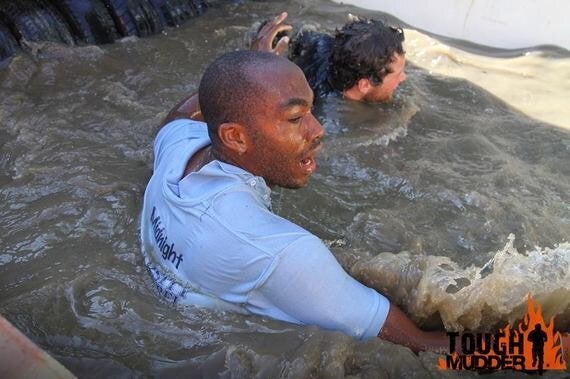Co-authored by Tobi Adepegba, Personal Trainer at Hall Training Systems
Obstacle course races (OCRs) like Tough Mudder are becoming more and more popular - they are great fun, great to do with friends and a great way to get fit! But they can be pretty grueling...
Now, you may be wondering how to prepare for them successfully. But have no fear, as we're about to give you some insight into the best possible way to prepare physically, mentally and what to take!

Tobi smashing Tough Mudder at Belvoir Castle, 2016
Mental and physical preparation:
•Do your research online - It really helps to know how long the course is. A simple Google search of the venue let's you find out key bits of information about the course e.g. What's the postcode? Are there a lot of hills? What kind of terrain will there be? How many obstacles will it have? This provides a great guide for your travel and training.
•Increase your endurance - You won't be surprised to see this included. Endurance plays a large part in completing OCRs. You're going to spend the majority of the course running, so it makes sense to include some running training into your programme. Once you know the distance then it makes programming easy. If running starts to get boring, then mix it up a bit with rowing or cycling. Make sure you mix it up with different terrains because an OCR is rarely on just one surface!
•Concentrate on strength - Now what I have found with a lot of these OCRs is that they require some upper body strength, especially when you need to tackle obstacles such as monkey bars, or help other participants over obstacles. A good strength programme that incorporates muscular endurance, strength and power will help you tackle any obstacle or give you a fighting chance at the very least. When I ran Tough Mudder, the obstacles mainly relied on pulling strength so be sure to add exercises like the seated row, bent over row, pull ups and assisted pull ups as well as push exercises like chest press, shoulder press to name a few.
•Train your brain - Have you ever heard the saying "fight or flight?". You'll probably spend the week leading up to your OCR a bit nervous, but feeling good. Then on race day you can't seem to relax, despite all the prep you have done. As well as training physically, I highly recommend that you do some kind of mental training, be it through relaxation techniques or watching videos of the course to prepare yourself for the challenges ahead.
What to take:
•An old pair of trainers - They recommend that you run in a pair of trainers that you don't mind getting ruined. Correct, but you don't want to take a pair that is uncomfortable! Make sure you think about the surfaces you are running on: during my first race I was in agony running on the concrete even though the grass was fine!
•Clothes you don't mind getting ruined - You see a lot of people in fancy dress e.g morph-suits and Super Mario costumes etc. but like I said in my last tip, you need to be comfortable. You'll be running a long distance in clothes that will likely be soaking wet and covered in mud and if you're uncomfortable, you won't have as much fun. Also if you need the toilet, you don't want to be faffing around with complicated clothing!
•A water bottle - Although not essential, it doesn't hurt to have one packed. There are normally sufficient water stations around the OCRs but they aren't always frequent. Having your own topped up water bottle handy will ensure you keep hydrated before, during and after the course.
•A stopwatch - OCRs like Tough Mudder put more emphasis on camaraderie rather than course time, whereas those like Rat Race are the opposite. If you're the kind of person who will be doing more than one, then take a stopwatch with you. Try and beat that time you when you repeat it.
•Fingerless gloves - This one is really down to individual preference. They can be a saviour protecting your hands when taking on climbing obstacles, and pulling yourself up with a rope.
•A Go Pro - If you're the kind of person who wants to capture every moment, then a Go Pro is a great idea. You'll find that a lot of runners wear them on their adventure into the unknown. Just make sure you have a waterproof case to put it in and some kind of head strap/body strap.
Over all, try and enjoy the experience. It's tough, but there's no feeling like getting to the finish line!